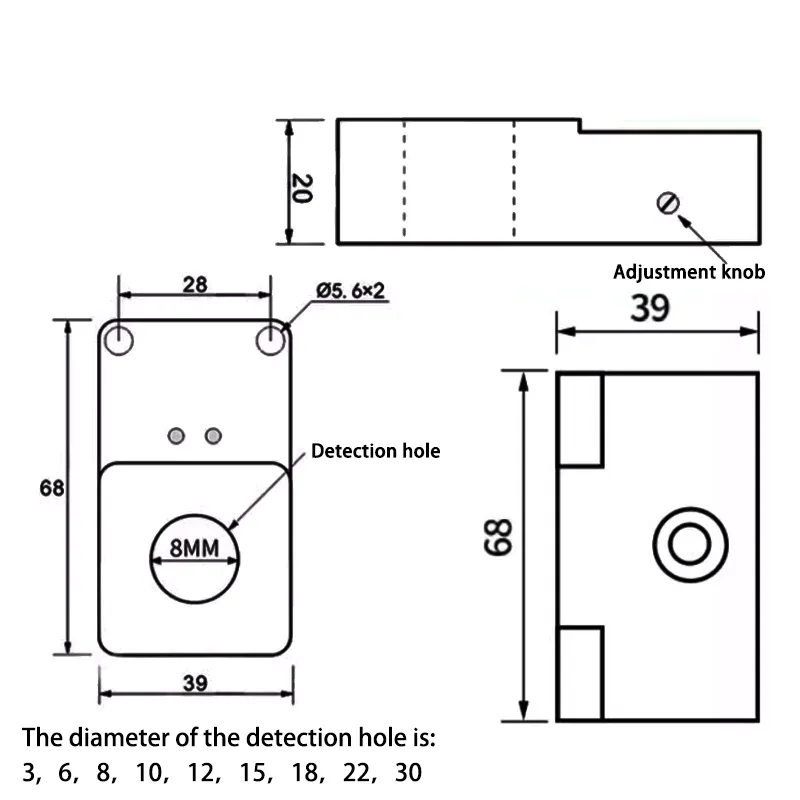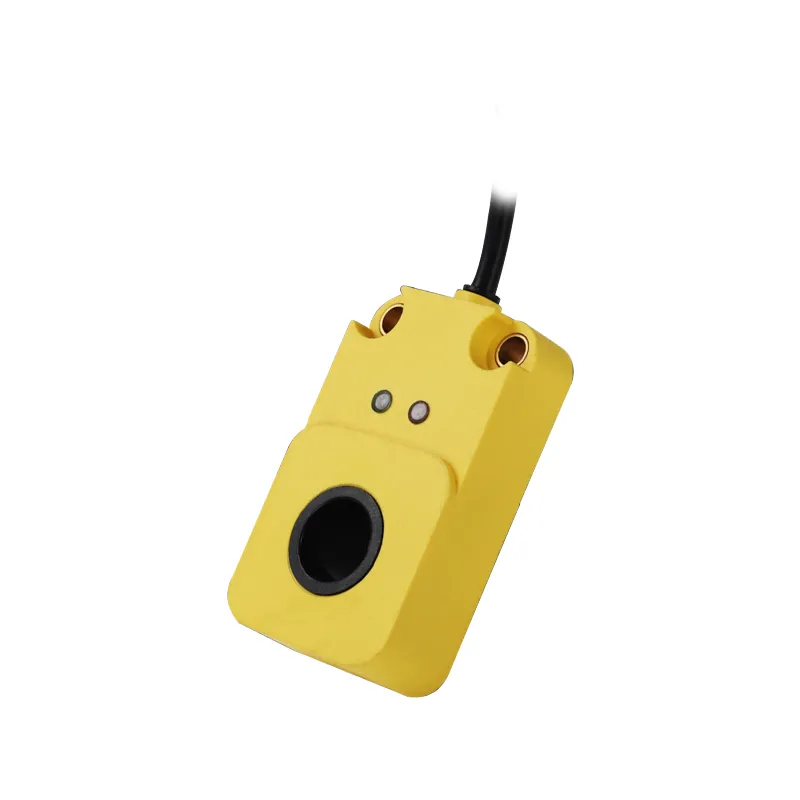Understanding the Foundation of Modern Industrial Automation
In the rapidly evolving landscape of industrial automation, proximity sensors have emerged as fundamental components that drive efficiency, safety, and precision in manufacturing processes. These sophisticated devices serve as the eyes and ears of automated systems, detecting the presence or absence of objects without physical contact. The integration of proximity sensors has revolutionized how machines interact with their environment, enabling unprecedented levels of automation and control in industrial settings.
The Core Functions and Capabilities of Proximity Sensors
Detection Technologies and Operating Principles
Proximity sensors employ various detection technologies to identify nearby objects. Inductive proximity sensors utilize electromagnetic fields to detect metallic objects, while capacitive sensors can detect both metallic and non-metallic materials through electrostatic field changes. Photoelectric proximity sensors use light beams to detect objects, and ultrasonic sensors emit high-frequency sound waves to measure distance and presence. Each technology serves specific applications, making proximity sensors versatile tools in automation.
The operating principle of a proximity sensor involves creating and monitoring a detection field. When an object enters this field, the sensor's internal circuitry detects the change and triggers an output signal. This non-contact detection method ensures reliable operation without mechanical wear, extending the sensor's lifespan and reducing maintenance requirements.
Sensing Range and Environmental Adaptability
The effectiveness of proximity sensors largely depends on their sensing range and ability to function in various environmental conditions. Modern proximity sensors offer adjustable sensing ranges, allowing them to detect objects from a few millimeters to several meters away, depending on the technology used. This flexibility enables precise positioning and detection in diverse industrial applications.
Environmental factors such as temperature, humidity, and electromagnetic interference can impact sensor performance. However, advanced proximity sensors incorporate protective features and compensation mechanisms to maintain reliable operation even in harsh industrial environments. This robustness makes them indispensable in automated systems where consistent performance is crucial.
Applications Across Industrial Sectors
Manufacturing and Assembly Lines
In manufacturing facilities, proximity sensors play a vital role in ensuring smooth production flow. They monitor part presence, verify proper component alignment, and control conveyor systems. For instance, in automotive assembly lines, proximity sensors detect the position of car bodies, ensuring robots and automated tools engage at precisely the right moment and location.
Quality control processes heavily rely on proximity sensors to verify product dimensions and presence. These sensors can detect missing components, incorrect assembly, or misaligned parts, preventing defective products from progressing through the production line. This real-time monitoring capability significantly reduces waste and improves overall production efficiency.
Packaging and Material Handling
The packaging industry utilizes proximity sensors extensively for container detection, fill-level monitoring, and proper packaging alignment. These sensors ensure bottles are correctly positioned before filling, boxes are properly sealed, and products are accurately counted during packaging operations. In automated warehouses, proximity sensors guide robotic systems in picking and placing operations, optimizing storage and retrieval processes.
Material handling systems depend on proximity sensors for collision avoidance and position control. These sensors help prevent equipment damage and ensure safety by detecting obstacles and maintaining proper spacing between moving components. The integration of proximity sensors in automated guided vehicles (AGVs) enables precise navigation and positioning in warehouse environments.
Safety and Quality Enhancement
Machine Safety Systems
Safety applications represent one of the most critical uses of proximity sensors in industrial automation. These devices form an integral part of machine guarding systems, creating invisible safety barriers around dangerous equipment. When operators or objects breach these safety zones, proximity sensors trigger immediate machine shutdowns, preventing accidents and injuries.
Advanced safety systems incorporate redundant proximity sensors to ensure fail-safe operation. This redundancy, combined with continuous self-monitoring capabilities, provides multiple layers of protection for both equipment and personnel. The non-contact nature of proximity sensors makes them particularly suitable for safety applications, as they can detect potential hazards before physical contact occurs.

Quality Control and Process Monitoring
Quality assurance processes benefit significantly from proximity sensor integration. These sensors provide continuous monitoring of critical parameters, enabling real-time adjustments to maintain product quality. In precision manufacturing, proximity sensors verify component positioning to micron-level accuracy, ensuring consistent product quality.
Process monitoring applications utilize proximity sensors to detect material flow, verify proper tool positioning, and monitor equipment status. This constant surveillance helps identify potential issues before they affect product quality or cause equipment damage. The data collected from proximity sensors also supports predictive maintenance strategies, optimizing equipment reliability and longevity.
Future Trends and Technological Advancements
Smart Sensor Integration
The evolution of Industry 4.0 has sparked development in smart proximity sensors with enhanced capabilities. These advanced sensors incorporate digital communication protocols, enabling seamless integration with industrial networks and IoT platforms. Smart proximity sensors can provide detailed diagnostic information, predictive maintenance data, and real-time performance metrics.
Integration with artificial intelligence and machine learning systems allows proximity sensors to adapt to changing conditions and optimize their performance automatically. This self-learning capability enhances detection accuracy and reduces false triggers, making automated systems more reliable and efficient.
Enhanced Sensing Capabilities
Technological advancements continue to expand the capabilities of proximity sensors. New developments include multi-function sensors that can simultaneously detect presence, distance, and material properties. These enhanced sensing capabilities enable more sophisticated automation applications while reducing the number of sensors required.
Miniaturization trends are producing smaller, more powerful proximity sensors suitable for compact automation systems. These sensors maintain high performance while consuming less power and occupying minimal space, making them ideal for mobile robotics and compact machinery.
Frequently Asked Questions
How do proximity sensors differ from traditional contact sensors?
Proximity sensors operate without physical contact, detecting objects through various technologies like electromagnetic fields, capacitive sensing, or optical methods. This non-contact operation reduces wear and tear, extends sensor life, and enables detection in applications where physical contact is impractical or could damage the target object.
What factors should be considered when selecting a proximity sensor?
Key selection criteria include the target material (metallic or non-metallic), required sensing range, environmental conditions (temperature, humidity, interference), response time needs, and output type requirements. Additionally, consider the sensor's IP rating for protection against environmental factors and any specific certification requirements for your application.
How do proximity sensors contribute to predictive maintenance?
Modern proximity sensors provide data on their operational status, detection patterns, and environmental conditions. This information helps identify potential equipment issues before failures occur, enabling planned maintenance interventions. The sensors can also detect changes in machine behavior that might indicate developing problems, supporting proactive maintenance strategies.

